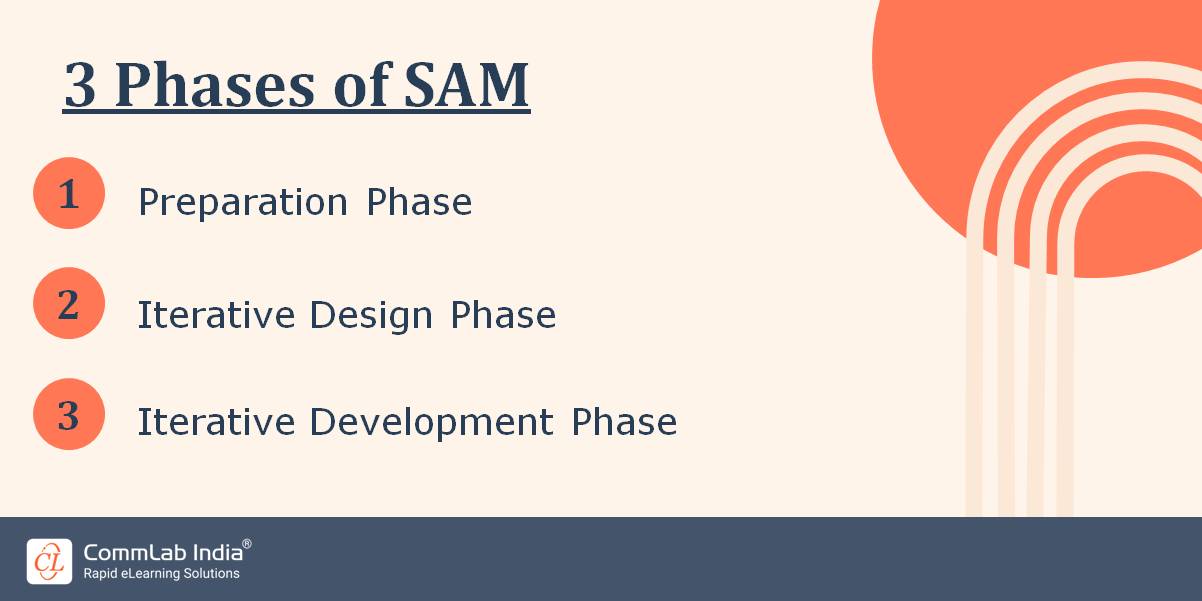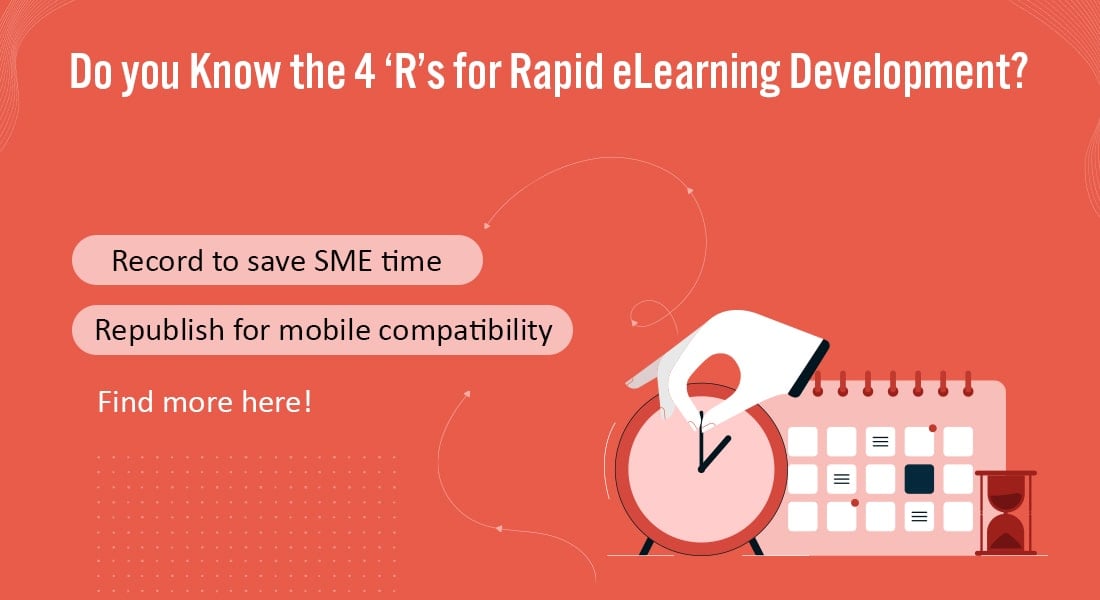Differentiating Myths From Reality for Rapid eLearning

Let me ask you a question. Have you considered leveraging rapid eLearning to design and develop training courses quickly and efficiently? If not, you are definitely missing out on a valuable opportunity to enhance your team’s productivity and performance.
Feeling pumped, right?
Now before you jump headfirst into the world of rapid eLearning, it’s crucial to distinguish fact from fiction, or as I’d like to say, myths from reality. In case you’re wondering why, it’s because there are a number of myths surrounding this approach that can be misleading or outright false.
BEWARE! These Myths About Rapid eLearning Are Misleading
Here’s the list:
- Rapid elearning compromises quality
- Rapid elearning is only suitable for basic or simplistic content
- Rapid elearning is only a one-size-fits-all solution without any regard for individual learner needs or preferences
- SMEs and IDs have only a limited impact
- The only way to ensure speed in rapid elearning is by reusing templates
By understanding the reality of rapid eLearning, you can make informed decisions about how it’s the right fit for your organization.
So without any delay, let’s start!
Rapid eLearning: Myths vs Reality
Myth 1: Rapid eLearning Compromises Quality
REALITY: When designed and executed properly, rapid eLearning is just as effective, and probably even more, as any traditional eLearning method. Rapid eLearning leverages pre-built templates and eLearning authoring tools that allow developers to create training materials quickly and efficiently, without sacrificing quality. In fact, rapid eLearning increases consistency and quality across training materials by ensuring that design and layout are standardized and that content is presented in a clear and organized manner.
→ Download Now: A Training Manager’s Handbook to Rapid eLearning Development
Myth 2: Rapid eLearning Is Only Suitable for Basic or Simplistic Content
REALITY: Rapid eLearning can handle complex topics and advanced concepts just as effectively as traditional eLearning methods. With the right approach and tools, it can be used to create engaging, interactive learning experiences that promote deep understanding and retention of information.
That’s right! Rapid eLearning tools offer several features like interactive simulations, animations, branching scenarios, quizzes, and gamification elements that help facilitate the immersive learning experience in rapid eLearning. Apart from that, rapid eLearning authoring tools also provide you with customizable templates and pre-built content that can be used to create more advanced and complex learning materials quickly and efficiently. Nervous about how to select the right authoring tool for eLearning development? Check out the video given below!
Myth 3: Rapid eLearning Offers Only a One-Size-Fits-All Solution
REALITY: If this myth was anywhere close to being true, it would be a bummer! But don’t worry. Rapid eLearning can be easily tailored to meet the specific needs of diverse learners through eLearning customization and personalization features. It takes into account various instructional design strategies, models, and different learning styles to ensure effective, learner-centric eLearning courses.

For example, in rapid eLearning you can design training courses based on the learner’s level of knowledge, interest, and proficiency. This allows them to move through the material at their own pace and as per their own convenience. Moreover, you can easily incorporate various multimedia elements like videos, audio, images, infographics, animations, etc., that help you cater to all kinds of learners with equal efficiency and impact.
Myth 4: SMEs and IDs Have Only a Limited Impact
REALITY: When it comes to rapid eLearning, authoring tools definitely play an integral role. But that doesn’t, in any way, undermine the roles of Subject Matter Experts (SMEs) and Instructional Designers (IDs) in the rapid eLearning design and development. Rapid eLearning tools certainly make the development process faster and more efficient, but the expertise and guidance of SMEs and IDs is still critical for creating effective and engaging training materials.
SMEs bring their subject matter expertise to ensure the accuracy and relevance of the content, while IDs help structure and design the content in a way that is more engaging and beneficial for the learners. Neglecting the role of SMEs and IDs in rapid eLearning can result in low-quality, ineffective training courses that fail to meet the needs of learners and the organization.
Myth 5: The Only Option to Guarantee Speed in Rapid eLearning is by Reusing Templates
REALITY: While pre-built templates play a significant role in speeding up the rapid eLearning development process, it is not the only way to ensure speed and efficiency. In fact, rapid eLearning tools offer a variety of other features and functionalities that can be used to create unique and engaging eLearning courses. For example, you can incorporate elements such as branching scenarios, interactive assessments, and gamification elements that can all be used to design immersive training modules.
Moreover, rapid eLearning follows the Successive Approximation Model (SAM). It is an agile process that involves SMEs and stakeholders in every developmental phase, thereby saving cost and time and facilitating speed in rapid eLearning.

Wrapping It Up!
Rapid eLearning is a valuable tool that can be used to create high-quality training materials quickly and efficiently. By dispelling these myths and understanding the reality of what rapid eLearning can offer, you can take advantage of this powerful approach to improve your team’s skills and performance. Check out our free handbook to rapid eLearning development that will help you overcome time, cost, and speed barriers.





